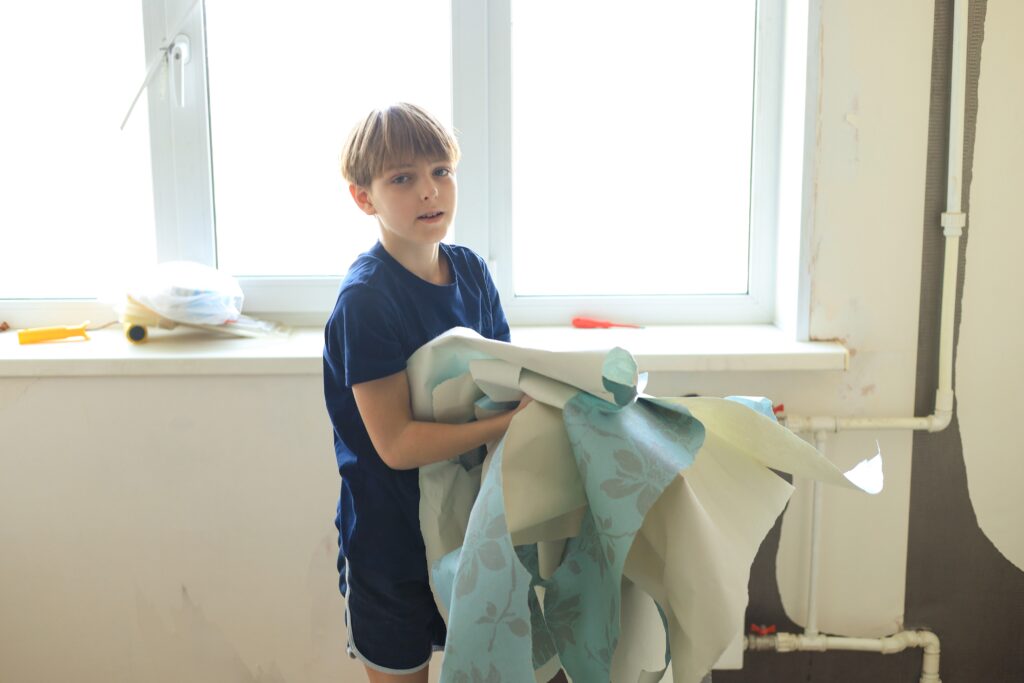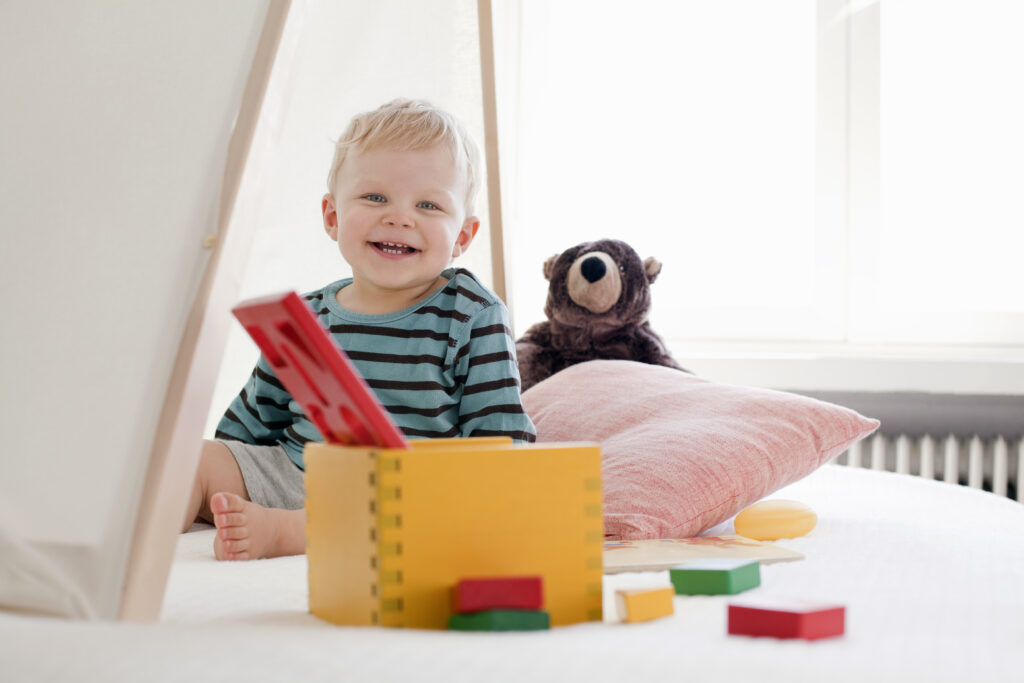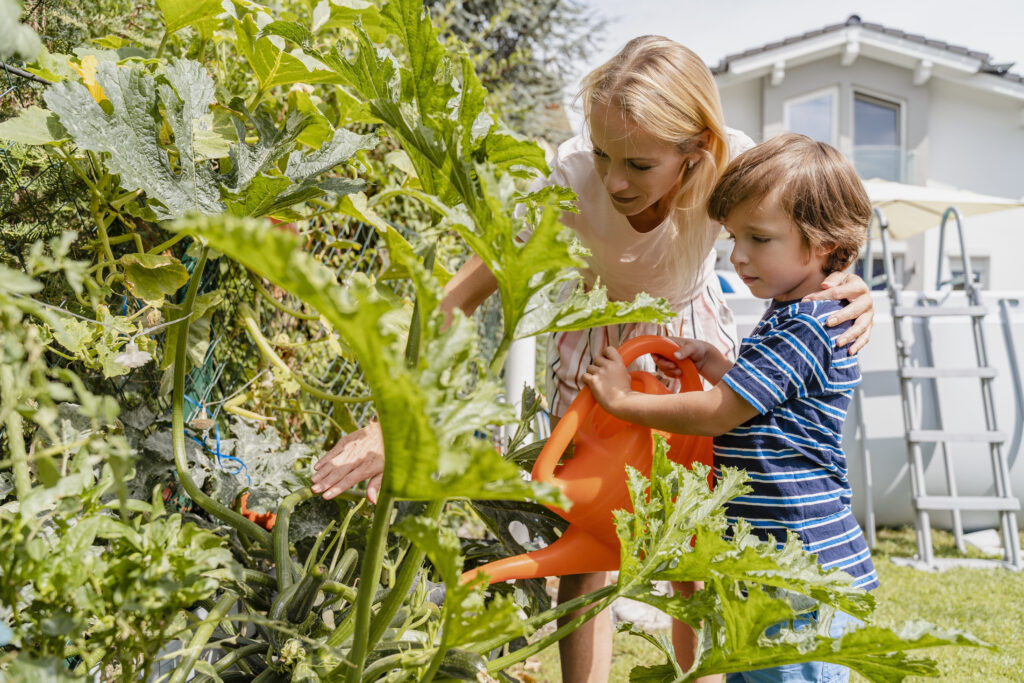How to Build a Strong Emotional Bond With Your Child

A child feels safe when there is a link to you. As a child development specialist, I know this to be true: strong bond are built in the small, everyday moments—not just the big ones. The bedtime talk. It’s in the moments when we stop and truly listen to them. The small things we do time and time again that say, “I see you.” I LOVE YOU.” Parenting can be really difficult at times. In the first years filled with all sorts of toddler activities, spilled food, and big feelings, this might feel like a lot. But a good link does not ask you to be perfect. It asks you to be present. Here is how you can start growing a strong bond with your child today. 1. Make Time to Be Close Every Day In our fast-paced world, it is really difficult to slow down. But a bond grows through planned, repeated times of being close. I call them “feeling check-ins.” These can be simple things like: These moments create a sense of safe, steady love and build trust over time. They can also help with holistic child development, where a child’s heart, mind, and way of communicating with others all grow at the same time. When life feels overwhelming, start with one daily habit that matters most. It could be a song you sing in the shower or “finish your child’s day on a note of gratitude. At bedtime, gently invite them to share something they’re glad about. It could be a small win. 2. Here to Know, Not to Fix Children don’t always need us to fix their problems — sometimes, they just need to feel truly seen, heard, and understood. Instead of: “You’re fine, it’s not a big deal,” Try: “That made you feel very sad, didn’t it? I’m here for you.” This approach, inspired by nonviolent communication, is a beautiful way to strengthen your bond with your child. It’s about letting them know their feelings are welcome And so? Kids feel safe in their feelings. They are more ready to open up. This is one of the key benefits of mindful parenting for child development—kids learn to understand their feelings and get to know themself when you are there for them. 3. Guide with Care, not Fear To guide is often not seen with the right perspective. It means “to teach,” not “to punish.” Using positive discipline strategies for toddlers means you set clear rules with warmth and care. For example, “It’s okay to be mad, but it’s not okay to hit.” Let’s take deep breaths as one.” This way it fits with the idea of conscious parenting—“A mindful parent is someone who notices what’s driving their reactions, takes a pause before responding, and chooses to lead through their own example. This is especially important when parents live in two different homes. When you deal with intense emotions or fights, leading with a kind heart builds credibility. That is where the strongest bonds reside. Real-time insight A 2024 U.S. study found that children who felt emotionally close to at least one parent were 42% more likely to excel in school and 52% more likely to resolve conflicts with friends without harm That is the true power of a close bond. It sets your child up for a life by filling their hearts with strength and resilience. Conclusion: The Strong Bond Starts with You It’s not about doing everything perfectly; it’s about being there, time after time. Tip: Make a “bonding jar.” Put small pieces of paper in it through small, everyday actions that build closeness. Like reading a book, looking at the stars, or performing a toddler activity like sorting things by color. Let your child pick one each day. It is fun and a valuable lesson. The path of mindful parenting continues. Together, keep learning, bonding, and growing. Don’t forget to follow us on Instagram, and YouTube for more ideas. For the latest news, click here to view our recent press releases.
Helping Your Child Develop Self-Regulation Skills

We’ve all been there—your child is mid-meltdown in the grocery store aisle, or maybe they’re lashing out at a sibling after a long school day. It’s in these challenging moments that the magic of self-regulation can make all the difference. And while emotional control may not come naturally to kids (or adults!), it is a learned skill—and one that begins at home. As a Child Development Specialist, I often remind parents that our job isn’t to create perfect children, but to model and guide them toward emotional intelligence. In this blog, we’ll dive into what self-regulation really means, why it’s essential, and how to help your child build it in everyday life. 1. Start Early with Routine & Predictability Self-regulation is the ability to manage one’s emotions, behavior, and energy levels in response to a situation. It begins with a sense of structure and security. a. Use Toddler Activities to Teach Patience Simple games like “Simon Says” or puzzles teach children to wait, listen, and follow directions. These fun exercises lay the foundation for impulse control. b. Schedule Regular Family Meetings Carve out time each week to talk about feelings, conflicts, and achievements. Giving kids a voice helps them name their emotions and feel validated, while reinforcing routines and mutual respect. c. Consistency Creates Calm Children thrive on predictability. Mealtime routines, bedtime rituals, and morning check-ins are all gentle ways to reinforce calm and prepare them to self-regulate during transitions. 2. Be a Role Model of Regulation Whether we like it or not, our children are always watching. How we handle stress teaches them how to handle theirs. a. Embrace Mindful Parenting Take a deep breath before reacting. Pause when you’re angry. These simple acts show children that emotions are okay, but so is slowing down to respond thoughtfully. b. Practice Nonviolent Communication Instead of “Stop yelling,” try “I hear you’re upset, let’s talk about it calmly.” Language shapes reality. Reframing correction with kindness helps teach your child better coping strategies. c. Encourage Active Listening Parenting When your child is venting, resist the urge to interrupt or problem-solve right away. Just listen. You’d be surprised how powerful your undivided attention can be in de-escalating big emotions. 3. Teach Regulation Through Connection Children learn to regulate when they feel connected, seen, and safe. a. Build Skills with Play Games that involve waiting turns, following rules, or role-play (like doctor or restaurant) encourage empathy and cognitive control—cornerstones of emotional regulation kids need. b. Promote Holistic Child Development Focus on the whole child—emotionally, socially, and cognitively. Sleep, diet, physical activity, and safe relationships all contribute to a child’s ability to regulate themselves. c. Explore Resources Like Best Parenting Books Books like “The Whole-Brain Child” or “No-Drama Discipline” offer evidence-based techniques that align with how to implement conscious parenting techniques at home and support positive discipline strategies for toddlers. Real-Time Insight According to the CDC, children with strong self-regulation are 2x more likely to perform well in school and develop healthy relationships. But only about 40% of U.S. children under 6 demonstrate age-appropriate self-regulation skills. This underscores the need for early, intentional support. Conclusion: It Starts With You Self-regulation doesn’t develop overnight. But with patience, empathy, and the conscious parent mindset, you can help your child thrive emotionally and socially. Your presence and guidance matter more than perfection ever could. Tip: Create a “calm corner” in your home—a soft space with books, sensory toys, or calming visuals. Let it be your child’s safe place to self-regulate. Don’t forget to follow us on Instagram, and YouTube for more insights and expertise. For the latest news and updates, click here to view our recent press releases.
Organization: Helping Kids Tidy Up Their Spaces

Teaching children to stay organized is one of the most valuable life skills you can impart. By helping them organize their backpacks, toys, and closets early on, you’re setting them up for a lifetime of responsibility and efficiency. These organizational habits not only make life easier but also contribute to family well-being by reducing stress and fostering a calm, orderly environment. Here’s how you can make organization fun and practical for your little ones. Why Organization Matters An organized space helps children feel more in control of their environment, boosting their confidence and ability to focus. It also makes daily routines smoother, whether it’s getting ready for school or finding their favorite toy. According to child development specialists, engaging children in organizational tasks fosters independence, decision-making skills, and self-discipline. Backpack Organization A cluttered backpack can turn into a daily struggle for both kids and parents. Here are some simple tips to help your child stay on top of their school supplies: 1. Create a Weekly Clean-Out Routine Set aside time each week to clean out old papers, snack wrappers, and unnecessary items. Use this opportunity as a moment of parent-child bonding and to teach them how to prioritize what to keep. 2. Use Color-Coded Supplies Encourage your child to use different-colored folders for each subject, making it easier to find assignments quickly. 3. Pack Smart Help them place heavier items, like textbooks, closer to their back and lighter items in the front compartments. This prevents back strain and keeps everything balanced. 4. Add a Checklist Tape a small checklist inside their backpack as a reminder of what they need to pack daily, such as lunch, homework, and sports gear. Toy Storage Solutions Toy clutter can overwhelm a space in no time, but with a little creativity, you can keep things tidy and accessible: 1. Categorize and Label Sort toys into categories like building blocks, dolls, or puzzles. Use clear bins with labels or pictures, so even toddlers can understand where things go. This is a great activity to include as part of activities for toddlers to teach sorting skills. 2. Rotate Toys To keep things fresh, store half of the toys in a separate area and rotate them every few weeks. This reduces clutter and increases excitement when they see “new” toys. 3. Designate a Cleanup Zone Create a small area where kids can gather toys before putting them away. This adds structure to cleanup time and makes the task less daunting. 4. Use Multi-Functional Furniture Storage benches or toy chests that double as seating are perfect for small spaces, keeping toys hidden while maximizing functionality. Closet Design for Little Kids A well-organized closet can make mornings stress-free and help kids feel more independent. 1. Lower the Bar Install a lower clothing rod or hooks so your child can easily reach their clothes. This empowers them to pick out their outfits. 2. Use Dividers Divide clothes by type—shirts, pants, dresses—and use labeled bins for socks, shoes, and accessories. This helps them know exactly where things belong. 3. Seasonal Switch Keep only the current season’s clothing within reach. Store off-season items in bins or higher shelves to minimize clutter. 4. Add a Daily Outfit Organizer Use a hanging organizer with compartments for each day of the week. Together, you can plan outfits during a family meeting or at the start of the week. Tips for Success Additional Resources For more ideas and strategies, explore child development classes online or consult the best parenting resources. Stay informed by visiting our press releases here, and don’t forget to follow us on Instagram and YouTube for more tips and tricks to empower your parenting journey. Final Thoughts: Creating Order, Building Confidence Teaching kids to organize their spaces is about more than tidying up—it’s about fostering independence, building confidence, and creating a calm environment where they can thrive. By starting with simple tasks like backpack organization, toy storage, and closet design, you’re equipping your child with lifelong skills that will serve them well in every aspect of life. So grab some bins, make a plan, and enjoy the process of creating order together. Each step you take is an investment in your child’s success and your family’s happiness.
Nutrition: Getting Beyond Chicken Nuggets and Hot Dogs

As parents, we all know the struggle of trying to get our children to eat a balanced diet. Sometimes it feels like they’re stuck on a never-ending loop of chicken nuggets and hot dogs. While it’s common for kids to prefer certain foods, ensuring they get proper nutrition is essential for their growth and development. With a little creativity and some mindful parenting, you can make mealtime healthier and more enjoyable. Why Balanced Nutrition Matters Proper nutrition is vital for your child’s physical and cognitive development. A diet rich in fruits, vegetables, whole grains, and lean proteins provides the nutrients they need to grow, learn, and thrive. Poor eating habits, on the other hand, can lead to energy slumps, difficulty concentrating, and long-term health issues. As a parent, fostering healthy eating habits contributes to your family well-being and teaches children the importance of making nutritious choices—a skill they’ll carry into adulthood. When Your Child is Stuck on Favorites It’s perfectly normal for kids to gravitate toward their favorite comfort foods. Instead of battling over every bite, use these strategies to introduce variety gradually: 1. Make Small Changes Swap traditional chicken nuggets for baked or homemade versions with leaner cuts of meat and whole-grain breading. Use healthier hot dogs made from turkey or plant-based proteins. These simple swaps can improve the nutritional content without compromising the flavors your child loves. 2. Involve Them in Cooking Children are more likely to try new foods when they’re involved in preparing them. Plan a fun cooking session as part of your parent-child bonding time. Let them mix ingredients, choose toppings, or help shape foods into fun designs. 3. Practice Patience Kids need time to adjust to new flavors and textures. Introduce new foods alongside their favorites, and don’t pressure them to eat everything at once. Gentle encouragement often works better than a power struggle. Tips for Sneaking Veggies Into Their Diet Getting your kids to eat more vegetables doesn’t have to be a battle. These creative tips can help: 1. Blend Veggies Into Sauces Puree spinach, carrots, or zucchini and mix them into pasta sauces, soups, or casseroles. The veggies blend seamlessly, and your kids won’t even notice. 2. Bake Them Into Treats Vegetables like zucchini, carrots, and sweet potatoes can be added to muffins, pancakes, or brownies for a nutrient boost without altering the taste. 3. Make Veggies Fun Cut vegetables into fun shapes or use cookie cutters to create appealing designs. Arrange colorful veggies into smiley faces or animals to make eating them more exciting. 4. Create Dips and Smoothies Pair raw veggies with hummus, yogurt-based dips, or guacamole. Smoothies are another excellent option—blend spinach or kale with fruits like bananas or berries for a sweet and healthy drink. 5. Hide Them in Comfort Foods Add finely chopped vegetables to meatballs, burgers, or even mac and cheese. This strategy works well for picky eaters who need extra encouragement to try new foods. Holding a Family Meeting Mealtime habits often improve when the entire family gets involved. Hold a family meeting to discuss healthy eating goals and brainstorm new meal ideas together. Encouraging your children to voice their preferences fosters a sense of ownership and cooperation. Seek Support and Resources If you’re struggling to manage your child’s nutrition, consulting a child development specialist or enrolling in child development classes online can provide helpful strategies tailored to your child’s needs. These resources are part of the best parenting resources available to empower your journey. Stay updated on the latest parenting trends and nutritional tips by visiting our press releases here, and don’t forget to follow us on Instagram and YouTube for more ideas and insights. Final Thoughts: Building Lifelong Habits Improving your child’s nutrition is a journey that requires patience, creativity, and persistence. By introducing healthier options in fun and engaging ways, you’re laying the foundation for lifelong healthy eating habits. Remember, mealtime is about more than just food—it’s an opportunity to connect, learn, and grow together as a family. Celebrate small wins, stay consistent, and enjoy the process of building a healthier future for your child. With your guidance and love, they’ll develop the confidence to make nutritious choices and thrive in every aspect of their lives.
Montessori Parenting: Bringing Learning and Independence Home

The Montessori method is more than an educational philosophy; it’s a way of life. Rooted in respect, independence, and hands-on learning, Montessori parenting fosters confidence, curiosity, and a love of discovery. While originally designed for the classroom, its principles can easily be applied at home to create an environment that nurtures your child’s growth and development. Let’s explore what Montessori parenting is, how you can incorporate it into your home, and the top 10 toys for toddlers that align with the Montessori method. What is the Montessori Method? Developed by Dr. Maria Montessori, the Montessori method emphasizes child-led learning within a prepared environment. It encourages independence, hands-on exploration, and respect for a child’s natural development. Children are seen as capable individuals who thrive when given the tools and opportunities to explore at their own pace.Montessori parenting adopts these principles in daily life, integrating mindful parenting techniques to foster independence and support emotional and cognitive growth. How to Bring Montessori into Your Home Incorporating the Montessori method at home doesn’t require a complete overhaul. Small changes can make a big impact: 1. Create a Prepared Environment Arrange your home so your child can access what they need independently. This could mean placing toys, utensils, or clothing within their reach. 2. Encourage Independence Involve your child in everyday tasks like cooking, cleaning, or setting the table. These activities build confidence and teach responsibility. 3. Practice Mindful Parenting Be present during your interactions. Listen actively, respect their choices, and guide rather than control. 4. Hold Family Meetings Use family meetings to involve children in decision-making, reinforcing their sense of importance and agency within the family. 5. Embrace Natural Materials Montessori emphasizes the use of natural materials like wood, fabric, and metal over plastic. These are more sensory-friendly and durable, offering a richer learning experience. 6. Provide Open-Ended Toys Choose toys that encourage exploration and creativity rather than ones with a single purpose. Top 10 Montessori Toys for Toddlers The Benefits of Montessori Parenting Montessori parenting supports family well-being by fostering a peaceful, respectful environment where children feel empowered. It also strengthens parent-child bonding through shared experiences and mutual respect. These principles encourage children to explore their interests and build self-confidence, laying the groundwork for future success. If you’re looking to deepen your understanding, consider exploring child development classes online or connecting with a child development specialist for personalized advice. Stay Connected for More Tips For additional guidance on Montessori parenting, visit our press releases here, and follow us on Instagram and YouTube for practical tips, tools, and inspiration to empower your parenting journey. Final Thoughts: A Journey of Discovery Montessori parenting is about more than providing the right toys or creating a prepared environment—it’s about fostering a mindset of respect, curiosity, and lifelong learning. By embracing this approach, you’re giving your child the tools to grow into an independent, confident, and compassionate individual. Start small, adapt as your child grows, and enjoy the journey of discovery together. With Montessori parenting, every moment becomes an opportunity to connect, learn, and thrive.
Gardening with Kids: Growing Together, Learning for Life

Gardening with kids is more than just a fun outdoor activity—it’s a wonderful way to teach responsibility, patience, and the value of nurturing life. Whether you have a sprawling backyard or a small indoor space, gardening can create lasting memories while contributing to your family’s physical and emotional well-being. Let’s explore the benefits of gardening with kids, tips for getting started, and how to make gardening a year-round activity. The Benefits of Gardening with Kids Gardening provides a host of developmental and emotional benefits for children. It’s an engaging way to learn life skills while fostering parent-child bonding and encouraging hands-on learning. 1. Supports Cognitive and Emotional Development Gardening helps children develop problem-solving skills, patience, and resilience as they care for plants and observe the growth process. It’s a practical application of concepts like cause and effect, making it a great learning experience. 2. Encourages Physical Activity Digging, planting, and watering plants keep kids active and away from screens, contributing to their overall family well-being. Gardening can also be integrated into activities for toddlers, such as planting seeds or watering with a small can. 3. Promotes Healthy Eating Growing fruits, vegetables, and herbs encourages children to appreciate fresh, nutritious foods. Kids are often more willing to eat something they’ve grown themselves, fostering healthier eating habits. 4. Enhances Emotional Well-being Spending time in nature is known to reduce stress and improve mood. Gardening offers children a peaceful environment where they can connect with nature and feel a sense of accomplishment. Tips for Teaching Kids to Garden 1. Start Small Begin with easy-to-grow plants like radishes, lettuce, or herbs. These grow quickly and are less likely to frustrate young gardeners. 2. Provide Age-Appropriate Tools Give kids their own set of gardening tools that are safe and sized for their age. This makes them feel more involved and responsible. 3. Make It Fun Turn gardening into a game or challenge. For example, see who can plant seeds the fastest or grow the tallest sunflower. 4. Teach Through Play Incorporate mindful parenting by being present and engaging with your child’s curiosity. Answer their questions and share fun facts about plants, bugs, or soil. 5. Hold a Family Meeting Before starting a gardening project, hold a family meeting to plan what you’ll plant and where. This involves everyone in the decision-making process and boosts excitement. Gardening in the Yard Outdoor gardening offers a wealth of opportunities for exploration and learning. Indoor Gardening Year-Round If you don’t have outdoor space, indoor gardening is a fantastic alternative. Gardening Resources and Support For additional guidance, explore child development classes online or connect with a child development specialist to learn how gardening can support your child’s development. Access the best parenting resources to discover new gardening ideas and techniques. Stay informed by checking out our press releases here, and follow us on Instagram and YouTube for ongoing tips and creative ideas to empower your parenting journey. Final Thoughts: Growing Together Gardening with your kids is more than planting seeds—it’s about nurturing connections, fostering growth, and creating lasting memories. Whether you’re digging in the dirt together or tending to indoor plants, every moment spent gardening strengthens your bond and teaches your children the value of patience, responsibility, and care. So grab your tools, choose your seeds, and start growing something beautiful together. With every sprout, you’re not just growing plants—you’re cultivating joy, connection, and a love for the natural world that will last a lifetime.
Affection: Building Connection and Supporting Brain Development

Affection is one of the most powerful tools in parenting. It fosters connection, builds trust, and nurtures a child’s emotional and cognitive growth. Beyond the warmth it brings, physical contact plays a crucial role in brain development, laying the foundation for healthy relationships and emotional resilience. Let’s explore why appropriate physical contact is essential, how to teach family members about affection, and ways to help children understand appropriate physical boundaries. Why the Brain Needs Physical Contact Physical affection, such as hugs, cuddles, and gentle touches, stimulates the release of oxytocin—often called the “love hormone.” This hormone reduces stress, fosters bonding, and promotes a sense of security. For children, this connection is essential for brain development, particularly in areas responsible for emotional regulation, memory, and social skills. According to child development specialists, consistent physical affection during early childhood helps children develop secure attachments, which are the foundation for healthy relationships throughout life. It also supports family well-being, creating an environment where children feel safe, loved, and valued. For younger children, incorporating affection into activities for toddlers—like holding hands during walks or sitting close while reading—reinforces these benefits naturally. Teaching Family Members About Affection Ensuring a loving and affectionate environment requires cooperation and understanding among all family members. Here are steps to encourage appropriate and meaningful displays of affection within your family: 1. Lead by Example Children often emulate the behavior they see. By practicing open and warm affection with your partner or other family members, you’re setting a powerful example. 2. Hold a Family Meeting Use a family meeting to discuss the importance of affection in strengthening bonds. This is a great opportunity to talk about different ways family members can show love, from hugs and high-fives to verbal affirmations. 3. Celebrate Cultural Differences Every family has unique ways of expressing affection, shaped by cultural or personal values. Celebrate and respect these differences while finding a shared approach that works for everyone. 4. Encourage Verbal Affection Not everyone is comfortable with physical contact, and that’s okay. Teach family members to use words to express love, such as saying, “I’m proud of you” or “I love you.” Teaching Kids Appropriate Physical Guidelines As important as affection is, teaching children about appropriate physical boundaries is equally crucial. It ensures their safety, helps them respect others, and empowers them to advocate for themselves. 1. Teach Consent Early Help your child understand that their body belongs to them and that they have the right to say no to physical contact. Similarly, teach them to respect others’ boundaries. 2. Use Role-Playing Incorporate mindful parenting by using role-playing to teach scenarios where boundaries might come into play, such as greeting someone new or comforting a friend. 3. Explain Different Kinds of Touch Discuss the difference between safe, loving touch (hugs from family) and inappropriate touch. Make it clear they can always come to you if something doesn’t feel right. 4. Provide Age-Appropriate Language For younger kids, use simple phrases like “Hugs are for family and friends who say it’s okay.” As they grow, expand the conversation to include nuanced topics about personal space and relationships. 5. Reinforce with Activities Activities like drawing personal boundaries or creating a “circle of trust” chart can make abstract concepts more tangible for children. Building a Foundation for Life Physical affection, when balanced with boundaries, fosters parent-child bonding and equips children with the emotional tools they need for a fulfilling life. Families practicing conscious co-parenting can work together to create a unified approach, ensuring consistency in messages about love and respect. For additional tips and resources, explore child development classes online or consult the best parenting resources available. Stay updated by visiting our press releases here, and follow us on Instagram and YouTube for expert advice and practical ideas that empower your parenting journey. Final Thoughts: A Loving Touch Affection is one of the simplest yet most profound ways to show love and support for your child. From cuddles on the couch to a pat on the back for a job well done, these moments create a lifetime of trust, security, and confidence. By practicing affection mindfully and teaching appropriate boundaries, you’re giving your child the tools to build healthy relationships and navigate the world with confidence. So hug often, express love freely, and let your family be a place where affection flows naturally, fostering joy and connection for generations to come.
Family Traditions: Building Bonds and Shaping Futures

Family traditions are more than just cherished memories—they’re a cornerstone of identity, connection, and emotional well-being. Whether it’s a special holiday celebration, a quirky birthday ritual, or a simple weekly routine, traditions help create a sense of belonging and security for children. These shared experiences foster parent-child bonding while also playing a vital role in shaping a child’s cognitive and emotional development. Let’s explore the value of family traditions, their impact on children’s brains, and how to establish meaningful rituals for holidays, birthdays, and everyday life. Why Family Traditions Matter Family traditions create a sense of continuity and connection. They provide children with a stable foundation in an ever-changing world, reinforcing the values and relationships that define their family. Traditions contribute to family well-being, building trust and fostering positive interactions between family members. On a neurological level, traditions stimulate the brain by reinforcing patterns and emotional connections. Celebrating milestones, engaging in rituals, or repeating familiar activities activates the reward centers of the brain, creating lasting memories. According to child development specialists, these experiences also enhance social skills, emotional intelligence, and self-esteem. Establishing New Traditions Creating family traditions doesn’t have to be elaborate or expensive. The most meaningful rituals are often simple and personal, reflecting your family’s values and interests. Holiday Traditions Birthday Traditions The Value of Legacy in Family Traditions Traditions often reflect a family’s history and cultural identity, linking generations through shared practices. They create a sense of legacy, helping children understand where they come from and what their family stands for. This connection to the past enriches their sense of self and fosters resilience. Holding a family meeting to discuss and design traditions allows everyone to contribute, ensuring that the rituals resonate with all members. These meetings also teach children the value of collaboration and active participation. The Role of Traditions in Child Development Traditions contribute significantly to a child’s growth and learning: Tips for Creating Lasting Traditions Additional Resources for Parenting Support For more tips on building family traditions and fostering mindful parenting, explore child development classes online or consult the best parenting resources available. Stay updated by visiting our press releases here, and follow us on Instagram and YouTube for ideas and inspiration. Final Thoughts: The Gift of Tradition Family traditions are a powerful way to nurture connection, teach values, and create a legacy of love and support. Whether it’s a holiday tradition that spans generations or a new ritual you create with your children, these shared moments become the fabric of your family story. So, gather your loved ones, start small, and watch as these traditions blossom into cherished memories that enrich your family’s bond for years to come. After all, the greatest gift we can give our children is the sense of belonging and joy that traditions bring.
Sleep Training: Navigating the Journey to Restful Nights

Sleep training is a hot topic for parents, often stirring a mix of emotions. Whether you’re considering letting your child “cry it out,” co-sleeping, or finding a middle ground, the ultimate goal remains the same: ensuring both you and your child get the rest needed for family well-being. Let’s explore the pros and cons of sleep training, why sleep is crucial for your little one’s development, and how to navigate this journey with care and compassion. Why Sleep Matters Sleep is essential for a child’s physical and mental development. During sleep, their brain consolidates learning, processes emotions, and supports growth. A lack of quality sleep can lead to irritability, difficulty concentrating, and even developmental delays. For parents, insufficient sleep can strain relationships, lower patience levels, and impact your ability to fully engage in parent-child bonding. Sleep training is one way to establish healthy sleep habits, promoting better nights for everyone. Pros and Cons of Sleep Training Sleep training isn’t a one-size-fits-all solution. Understanding its advantages and potential challenges can help you decide what’s best for your family. Pros of Sleep Training Cons of Sleep Training Methods of Sleep Training Cry It Out (CIO) This method involves letting your child cry for gradually increasing periods before comforting them. The idea is to teach self-soothing skills. Gradual Extinction This approach involves slowly reducing your intervention during bedtime over several nights, helping your child adjust at their own pace. Co-Sleeping Co-sleeping involves sharing a bed or room with your child, offering immediate comfort and reassurance. Caring for Your Child During Sleep Training Whether you choose CIO, gradual extinction, or co-sleeping, it’s important to approach sleep training with empathy and mindful parenting techniques. Balancing Parental Roles with Conscious Co-Parenting Sleep practice is easier with teamwork. Practicing conscious co-parenting allows both parents to share the responsibility, ensuring no one feels overwhelmed. Discuss your approach together during a family meeting, and create a plan that works for everyone. Tips for a Smoother Sleep Training Journey Additional Resources for Parents Parenting is a journey filled with learning curves, and sleep training is no exception. Explore child development classes online and access the best parenting resources for tips, tools, and insights that support your child’s growth. For updates on parenting trends and expert advice, check out our press releases here, and follow us on Instagram and YouTube for ongoing tips that empower your parenting journey. Final Thoughts: Restful Nights for a Thriving Family Sleep training is about finding what works best for your child and your family. Whether you let them “cry it out,” co-sleep, or blend methods, the goal is to establish healthy sleep habits that benefit everyone. Trust your instincts, stay patient, and remember that every family’s journey is unique. Ultimately, restful nights pave the way for happier, healthier days, allowing you and your child to thrive together. Sweet dreams!
Potty Training: Navigating the Journey with Patience and Positivity

Potty training is a milestone every parent looks forward to, but it’s also one that comes with its share of challenges. It’s easy to worry about timelines or feel frustrated when progress is slow, but here’s the good news: your child won’t go to college in a pull-up. Each child has their unique timeline, and with the right approach, you can make this process a positive experience for the entire family. Let’s explore popular potty training methods, how to stay patient, and how to make the journey as smooth as possible. Why Potty Training Matters Beyond the practical benefits of ditching diapers, potty training plays a significant role in a child’s development. It’s an opportunity to teach independence, responsibility, and self-awareness. For parents, it’s also a moment to practice mindful parenting, where you stay present and attuned to your child’s needs and emotions. Potty training can also enhance parent-child bonding as you work together toward a shared goal. With patience and a bit of creativity, this process can become an empowering experience for your child. The 3-Day Potty Training Method: A Quick Transition The 3-day method is a popular approach for parents looking to make a quick transition from diapers to potty. It involves dedicating three days to intensive potty training, where your child goes diaper-free and is encouraged to use the potty consistently. Benefits of the 3-Day Method: Tips for Success: The Benefits of Pull-Ups For families who prefer a gradual approach, pull-ups can be an excellent tool. They provide a middle ground between diapers and underwear, helping your child transition at their own pace. Benefits of Pull-Ups: Pull-ups can be particularly helpful during the early stages of potty training or as part of a conscious co-parenting strategy, ensuring consistency between caregivers. The Power of the Reward System Rewards can be a fun and effective way to motivate your child during potty training. The key is to make rewards immediate and achievable to reinforce positive behavior. Reward Ideas: Using rewards ties into family well-being by creating a positive atmosphere around potty training, making it a less stressful experience for both you and your child. Staying Positive Throughout the Process Potty training is a journey, not a race. Here’s how to stay positive even when it feels challenging: Additional Resources for Support Potty training doesn’t have to be overwhelming. There are plenty of resources available to guide you through the process. Explore child development classes online or check out the best parenting resources to gain tips and techniques from experts. For updates and insights, visit our press releases here, and follow us on Instagram and YouTube for ongoing tips, tools, and advice to empower your parenting journey. Final Thoughts: Trust the Process Potty training is a significant milestone, but it’s also just one of many steps in your child’s growth. By staying patient, supportive, and positive, you’re not only teaching them a skill—they’re also learning resilience, independence, and trust in your guidance. Whether you opt for the 3-day method, pull-ups, or a blend of both, remember that every child progresses at their own pace. Embrace the journey, celebrate the milestones, and know that with love and encouragement, you’re setting your child up for success—both in potty training and beyond. Happy training!

